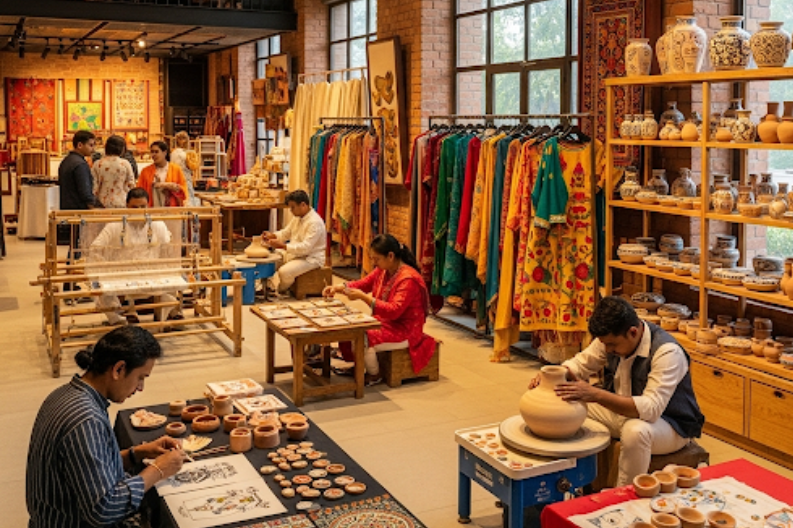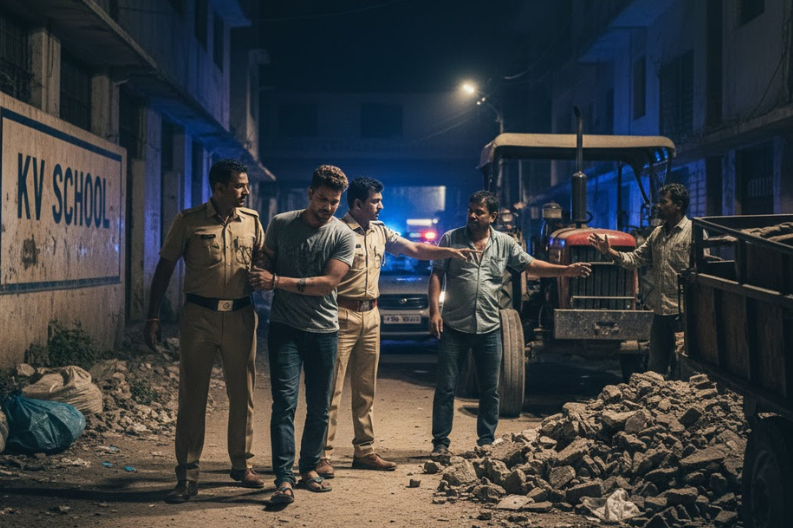Union Minister of Textiles Giriraj Singh on Thursday inaugurated The Kunj, a retail and cultural space in Delhi dedicated to Indian handicrafts and handlooms. Located in Vasant Kunj, the venue aims to connect artisans with buyers and give them a platform to showcase their work.
The opening ceremony brought together senior officials from the Ministry of Textiles, including the Secretary of Textiles and the Development Commissioners for Handicrafts and Handlooms. Industry representatives also joined the event, highlighting its importance for India’s craft sector.
The Kunj offers retail showrooms, live craft demonstrations, interactive workshops, exhibitions, and regional cuisine. The inaugural program will run for three months. Visitors can engage directly with artisans and gain a closer view of the skills behind handmade crafts.
During his visit, Singh spoke with artisans, brand owners, and curators. He listened to their ideas and experiences, showing the government’s commitment to supporting traditional crafts. He also opened Shilp Bhawan, the new office of the Development Commissioner of Handicrafts, which will work to promote and manage the sector.
The Kunj is designed as a model project that could inspire similar initiatives across the country. It creates modern retail opportunities while helping traditional crafts remain relevant.
This development reflects a larger trend of reviving handicrafts and bringing them into today’s markets. It not only supports artisans financially but also preserves cultural traditions. By attracting public interest and encouraging younger generations to learn, spaces like The Kunj help keep India’s artistic heritage alive.
The initiative stands as a major step in celebrating craftsmanship and offering artisans new ways to grow.



